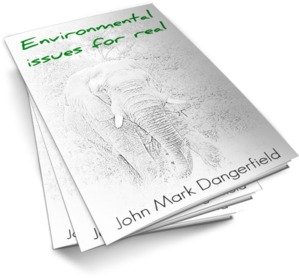Home | About CCW | Contact Us | Climate change Meaning | Causes | Solutions | Emissions | Carbon trading
Climate zones
Climate zones are a way of categorizing the differences in climate from region to region. This is because whilst we may talk of global climate or world weather there is not really a single climate.
As the climate-change-wisdom discussion of what is climate change explains, the dictionary defines climate as
"the prevailing weather conditions of an area or as a region with particular weather conditions"
The idea is that it is possible to describe climate as the pattern in a set of physical phenomena – temperature, rainfall, storms, clarity of the sky – because these features tend to be predictable for a given place.
There are regions where it is dry in summer and mild and wetter in winter, the so-called Mediterranean climate.
Then there is the temperate climate of strong seasonality, cool winters and warm summers but with rainfall all through the year.
These broad descriptions are helpful but there are also more detailed systems of classification.
The most widely used and well-known is the Koppen classification system invented by Wlidimir Koppen in 1884 and developed throughout his life. It has six major groups
- Tropical/megathermal climates
- Dry (arid and semi-arid) climates
- Temperate/mesothermal climates
- Continental/microthermal climates
- Polar climates
- Alpine climates
Each of these groups are then further subdivided so that the system provides enough distinction to allocate areas or regions into a particular zone.
There are other systems that use vegetation as the basis for the classification. This makes sense because the types of plants that can grow together in the same location do so because they are well adapted to the specific conditions of weather and climate.
For example, only frost tolerant species can survive in areas where there are either cold periods in early autumn or, especially, frosts in spring when the plants are growing or flowering.
Climate zones are a useful concept to
- help understand where climate change effects are likely and where they will be most acute.Defining zones as areas or regions allows us to map them and to see how the boundaries between zones might move over time. This is easier than it used to be thanks to technology solutions for recording weather remotely and presenting the weather data as maps.
- help assess how climate will shift with latitude and altitude.For example, as overall climate warms so alpine climate zones will contract to the higher peaks in mountain ranges. We also need to know how seasons will shift in timing and duration at different latitudes around the globe.
- specific technical dataFor example, zones are used in carbon accounting first order decay models to predict methane emissions from landfills. If a landfill is in a warm, wet climate then the waste will decompose faster and release methane to the atmosphere quicker than the same waste deposited in a landfill in dry temperate zone.
the conundrum
It is a strong human trait to classify things.
We really like to put a label on objects so that we know where to file them, physically or in our minds. This is because of the way our mind works with memory and thinking and it has been very useful to us.
It was a very handy skill to know that the harmless green snake was different to the venomous brown snake or that the red mushroom would make you feel sick but the white mushroom was both tasty and safe.
We have kept on naming, grouping and classifying just about everything from hip-hop artists to ants. No surprise that we wanted to do this with climate.
Whilst the snake example had an obvious benefit, the climate classification is perhaps less useful.
It may have focused our attention too much on types and the differences between them. Instead climate is really about change for that is what it does, only classification systems don't do change all that well.
More climate-change-wisdom pages on this topic...
More reading from CCW
Environmental Issues for Real by Dr J. Mark Dangerfield looks at some of the obvious, and some of the not so obvious, challenges for a growing human population living as we do in a finite world.
Only this time it's not about the impending disasters or the guilt or the blame.
This time, it’s 10 brief essays that are about the bigger picture. In less than an hour you could glimpse something different, a view that we can only see when we take a fresh look.
Download your copy at Smashwords
Back to top of Climate zones | Back to What is climate change | Back to Climate-change-wisdom home
Recent Articles
-
Reducing emissions while looking for solutions...
Nov 01, 15 04:46 PM
I've seen a lot of post's online for ideas on reducing emissions. The one suggestion I have not seen, is the most obvious. There should be a government -
Climate change evidence
Mar 24, 15 06:22 AM
Real climate change evidence has to demonstrate a change in climate. An extra sunny day or a severe storm or a flood is not enough. -
The climate change effect
Feb 19, 15 03:08 AM
What will be the climate change effect? There isn't one, there are many. Perhaps too many for us to understand.






New! Comments
Have your say about what you just read! Leave me a comment in the box below.